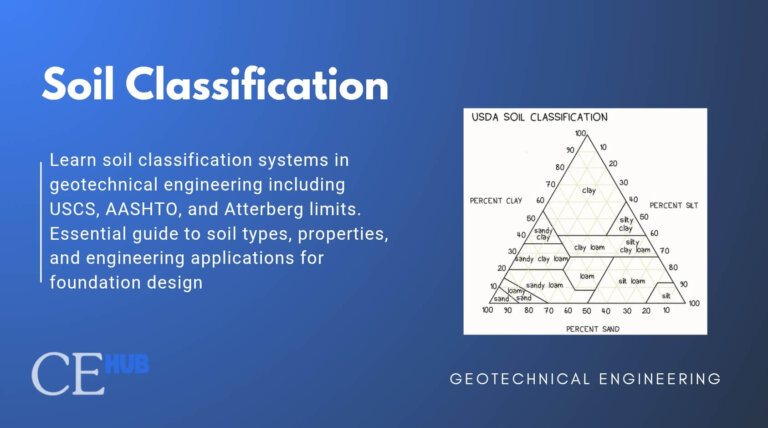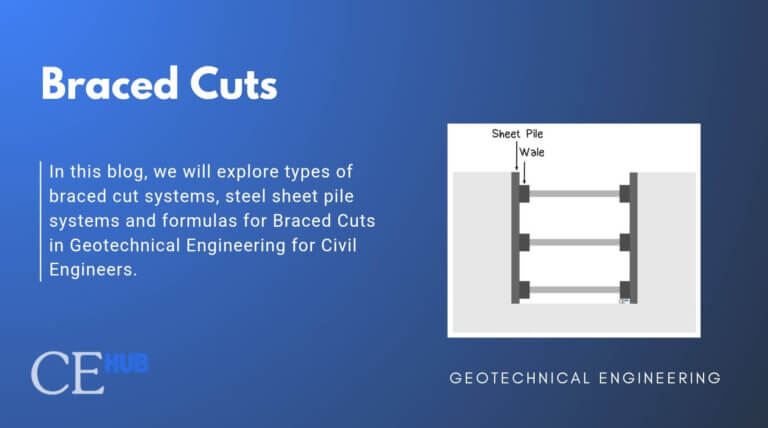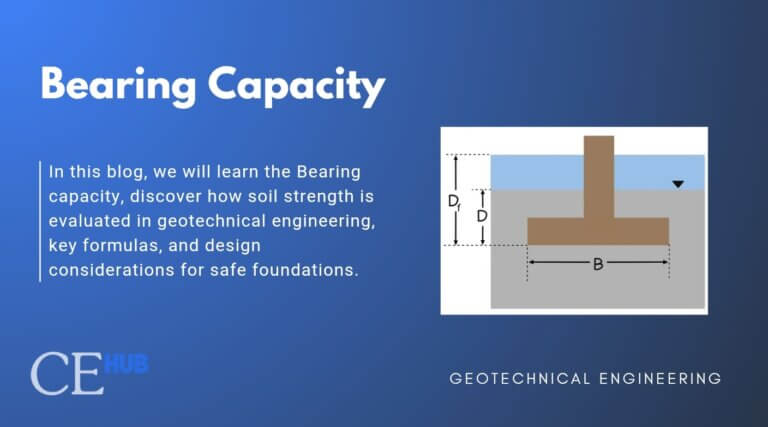Soil Properties in Geotechnical Engineering
Soil isn’t just dirt. It’s a complex composite material made up of solids, water, and air. Understanding the relationships between these three phases is fundamental to everything we do in geotechnical engineering, from foundation design to slope stability analysis. Without mastering these basic properties, we’re essentially building on shifting ground, both literally and figuratively.
Soil is a Three-Phase System
Here’s something that might seem obvious once you think about it, but it’s surprisingly easy to overlook: soil isn’t just solid stuff. Any chunk of soil you grab is actually a mixture of three things. You’ve got solid particles like sand grains or clay minerals, water filling some of the tiny spaces between those particles, and air filling whatever spaces are left over. It’s like a sponge, really, that can be compressed, and consolidated.
The way these three components are mixed together basically determines everything else about how that soil behaves. Get the proportions right, and you can predict how strong it’ll be, how much it’ll settle, and how water will move through it.
Volume Relationships
Volume relationship is the backbone of soil characterization. They tell us how much of our soil sample is actually solid material versus void space.
Overview of the Volume Relationships
| Void Ratio | |
| Porosity | |
| Degree of Saturation | |
| Air Content | |
Void Ratio
The void ratio represents the ratio of the volume of the volume of voids to the volume of solids.
![]()
where: ![]() : Volume of Voids
: Volume of Voids![]() : Volume of Solids
: Volume of Solids
For the list of void ratio for different soils. Check void ratio values.
Porosity
Porosity is the ratio of void volume to the total volume of soil.
![]()
where:
V: Total Volume![]() : Volume of Voids
: Volume of Voids
Other formulas derived from it, the relationship between the void ratio e, and the porosity n is given by:
![]()
Or conversely:
![]()
Degree of Saturation
The degree of saturation tells us what fraction of the void space is filled with water versus air
![]()
This relationship only makes sense when Sr is between 0 (completely dry) and 1 or 100% (completely saturated). Predicting saturation profiles in natural soils, especially in semi-arid climates with seasonal variations, is remarkably difficult despite its importance for calculating actual unit weights in partially saturated conditions. So when the soil is partially wet (not fully saturated), water doesn’t just sit there neutrally. Water molecules are attracted to soil particles, so they stick to them. This creates a kind of “pull” or “suction” that holds the water in place. The wetter the soil gets, the less this pull matters. The drier it gets, the stronger this pull becomes.
But the problem is this pull-and-saturation relationship is different for every soil type. Sand behaves one way, clay another, silt yet another. And we can’t just use a formula to predict it. You have to test each type of soil in the lab to figure out exactly how its saturation changes as it dries out. Without doing that testing, your predictions will be way off.
Weight Relationships
We’ve talked about the volumes of stuff in soil. Now, let’s talk about weight. Weight relationships basically tell you how heavy your soil is, basically, how the weight of the solids, water, and air all add up together.
Think of it this way: if you fill a bucket with soil from a construction site, you want to know how much that bucket weighs. But it’s not just the weight of the solid particles. You’ve also got water trapped in those tiny spaces, and that water adds weight too. So the total weight depends on how much of each phase (solids and water) you actually have in there.
So when engineers calculate these weights for design, we make assumptions that don’t always match reality. We assume soil is completely dry, or completely wet, or we assume it stays the same. But in the real ground, conditions change. Water content varies, soil settles, things shift. And we don’t always account for that when we do our calculations.
Overview of the Weight Relationships
| Moisture or Water Content | |
| Unit Weight or Moist Unit Weight | |
| Dry Unit Weight |
Water Content
it is defined as the weight of water to weight of solid present in the given.
![]()
where: ![]() : Mass of Water
: Mass of Water![]() : Mass of Solid Particles
: Mass of Solid Particles
This straightforward property has major practical importance. A clay with 20% water content behaves completely differently from the same clay at 30% water content. Yet predicting in-situ water content variations, particularly in partially saturated zones, remains challenging.
Unit Weight: Practical Working Parameters
So, unit weights are where theory meets practice. These are the values we plug directly into our calculations, and getting them right is essential.
Total Unit Weight
The total unit weight is the weight of soil per unit volume, including water and air. This is what we use when calculating vertical stresses in the ground. It’s the weight per cubic meter that builds pressure at depth.
![]()
Dry Unit Weight
The dry unit weight is the weight of solids per unit volume, excluding water.
![]()
Take note also this relationship between dry unit weight and void ratio as this relationship is crucial for understanding soil compaction in the next topics in geotechnical engineering.
Saturated Unit Weight
![]()
Saturated unit weight can also be obtained using the specific gravity.
![]()
This is critical for analyzing submerged conditions, such as soil below water table.
Want to have the Complete Geotechnical Engineering Soil Properties Formulas? Along with other Topics.
Grab this on sale!
Geotechnical Engineering Cheat Sheet
Master the principles of soil mechanics with this comprehensive cheat sheet. Perfect for students and professionals!
Specific Gravity
Specific Gravity is the ratio of the density of soil solids to the density of water.
![]()
For most mineral soils, Gs ranges from about 2.60 to 2.75. However, soils with unusual mineral compositions such as volcanic soils, organic-rich soils, or laterites, can have significantly different specific gravities
Effective Unit Weight
Perhaps the most important and misunderstood relationship in soil mechanics is effective unit weight (γ’)
![]()
This is the weight that actually contributes to effective stress—the stress that controls soil strength and compressibility. This distinction between total and effective stress is foundational, yet field evidence suggests many design failures occur when engineers confuse these parameters or apply total stress concepts where effective stress should be used.
Examples
Example 1
Given
Specific Gravity of Soil Solids, ![]() = 2.81
= 2.81
Void ratio, e=0.61
Degree of Saturation, S = 42%
Unit Weight of Water = ![]()
Find the following unit weight of soil, Dry unit weight of soil, unit weight of the soil when fully saturated.
Unit Weight of Soil
![]()
![]()
![]()
Dry Unit Weight of Soil
![]()
![]()
![]()
Saturated
![]()
![]()
![]()
References:
Das, B. M., & Sobhan, K. (2014). Principles of geotechnical engineering. Cengage Learning.
Das, B.M. (2007). Principles of Foundation Engineering (7th Edition). Global Engineering






